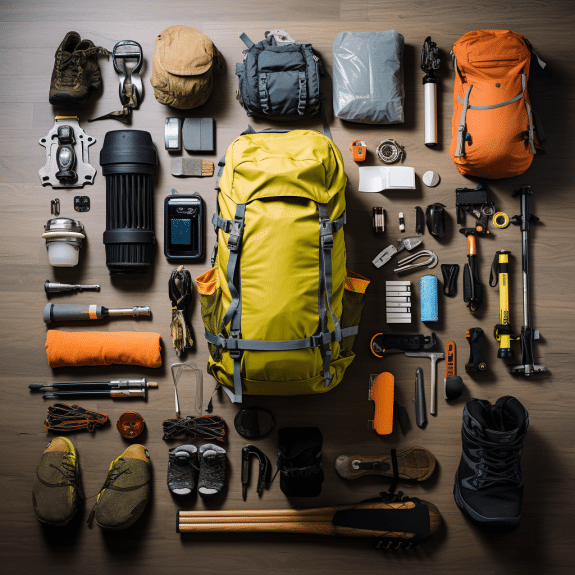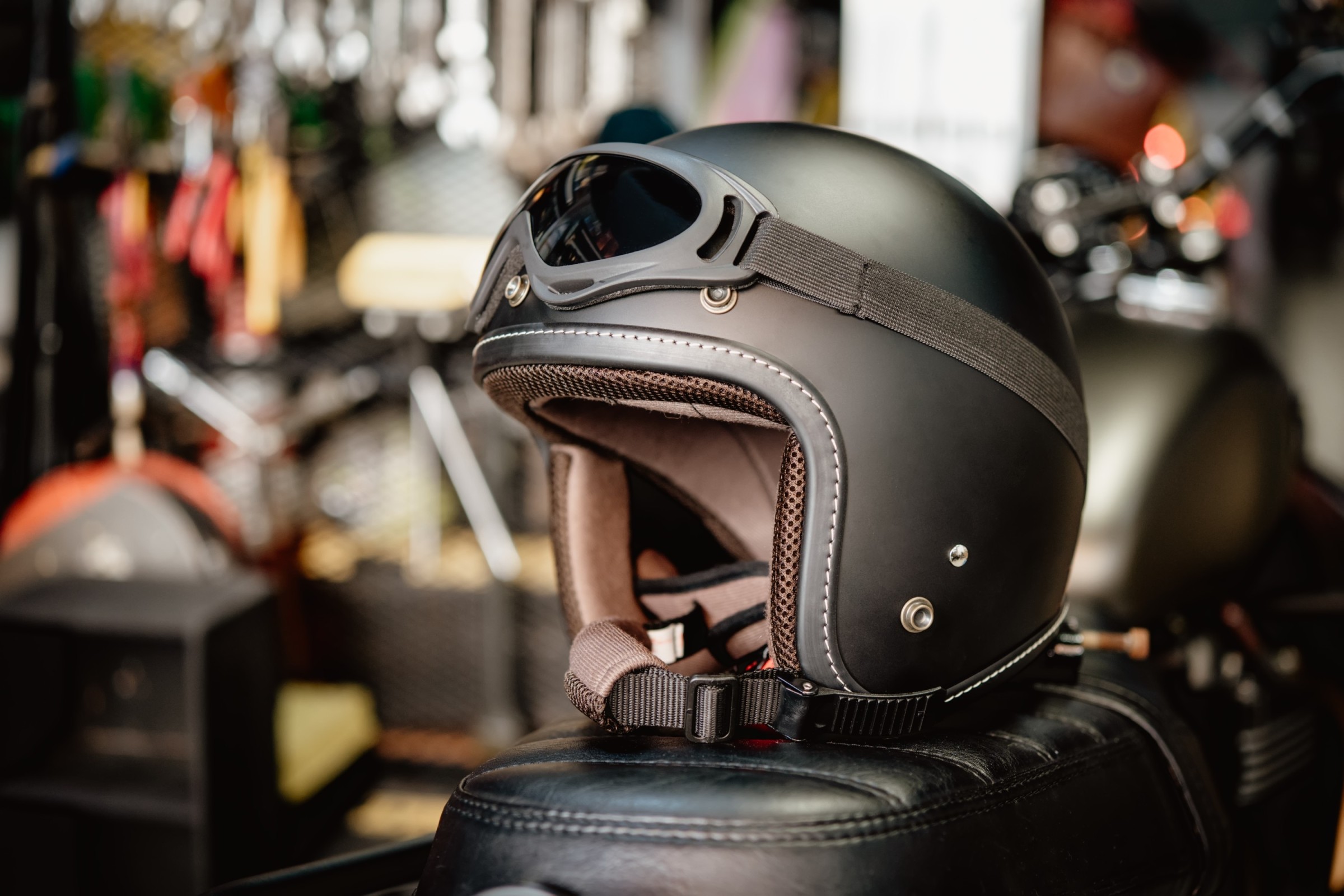
Safety First: Essential Gear for a Safer Commute This Week
The daily commute. For many, it’s a necessary ritual, a bridge between home and work. But how much thought do you really give to your safety during this daily transition? As we navigate busy streets, unpredictable weather, and the general chaos of modern transit, prioritizing safety isn’t just a good idea; it’s essential. This week, let’s equip ourselves with the right gear to ensure a smoother, safer journey, no matter your mode of transportation.
Understanding the Risks: A Proactive Approach
Workplace safety, as highlighted by organizations like OSHA, emphasizes a proactive approach to preventing injuries and illnesses. This philosophy extends seamlessly to our commutes. By understanding potential hazards and taking preventative measures, we can significantly reduce the likelihood of accidents and ensure we arrive at our destinations healthy and unharmed. The International Labour Organization (ILO) consistently points out that despite progress, work-related accidents and diseases still have devastating impacts, a stark reminder that vigilance is key, even outside the traditional workplace.
Common Commute Hazards
From unexpected road debris to the simple fact of being in transit, a multitude of factors can pose a risk. Whether you’re walking, cycling, driving, or using public transport, being aware of your surroundings is the first line of defense.
Essential Gear for Every Commuter
Let’s break down the critical gear that can elevate your commute from risky to remarkably safe.
1. Enhanced Visibility: Being Seen is Being Safe
This is arguably the most crucial aspect of personal safety for commuters, especially during dawn, dusk, or poor weather conditions.
For Pedestrians and Cyclists:
- Reflective Clothing: High-visibility vests, jackets, or even simple reflective strips attached to your bags or clothing can make a world of difference. Look for gear with EN ISO 20471 certification for proven reflectivity.
- Headlights and Taillights: For cyclists, functioning front and rear lights are non-negotiable. Ensure they are bright enough to be seen in daylight and have flashing modes for maximum attention.
- Reflective Accessories: Consider reflective wheel tape, shoe covers, or helmet stickers to increase your visibility from all angles.
For Drivers:
- Properly Maintained Lighting: Regularly check that your headlights, taillights, and brake lights are clean and functioning correctly. Replacing burnt-out bulbs promptly is essential.
2. Personal Protection Equipment (PPE)
While often associated with specific jobs, certain PPE can be invaluable for commuters.
For Cyclists and Motorcyclists:
- Helmets: A certified helmet is paramount. It’s designed to absorb impact and protect your most vital organ. Ensure it fits snugly and is worn correctly.
- Gloves: Padded gloves offer protection in case of a fall and improve grip on handlebars.
- Protective Eyewear: Sunglasses or clear safety glasses shield your eyes from debris, wind, and UV rays.
For Drivers:
- Seatbelts: Always wear your seatbelt. It’s the single most effective safety device in a vehicle.
- Mobile Phone Mounts: If you must use your phone, a hands-free mount keeps your eyes on the road and your hands on the wheel.
3. Navigational Aids and Communication
Staying oriented and being able to communicate in an emergency can be lifesavers.
For All Commuters:
- Fully Charged Mobile Phone: Essential for navigation, communication, and emergency calls. Consider a portable power bank if you have a long commute or rely heavily on your phone for navigation.
- Navigation Apps: Familiarize yourself with navigation apps that provide real-time traffic updates and route suggestions.
- Emergency Contact Information: Ensure your phone’s emergency contact information is readily accessible, or carry a card with your details and any relevant medical information.
4. Weather Preparedness: Adapting to the Elements
Unpredictable weather can quickly turn a commute hazardous. Being prepared is key.
For Pedestrians and Cyclists:
- Waterproof Outerwear: A good quality waterproof jacket and trousers will keep you dry and comfortable, preventing hypothermia and maintaining visibility.
- Waterproof Footwear: Keep your feet dry with waterproof shoes or boots.
- Anti-Fog Wipes for Eyewear: If you wear glasses or goggles, anti-fog solutions are a game-changer.
For Drivers:
- Windshield Wipers and Fluid: Ensure your wipers are in good condition and your washer fluid reservoir is full, especially before anticipated rain or snow.
- Tire Tread: Properly inflated tires with adequate tread are crucial for traction, especially in wet or icy conditions.
- Emergency Kit: Consider a basic emergency kit that includes jumper cables, a first-aid kit, and a flashlight.
5. Lithium-ion Battery Safety: A Growing Concern
With the increasing prevalence of electric bikes, scooters, and personal electronics, understanding lithium-ion battery safety is becoming more critical for commuters. As OSHA’s guidance on Lithium-ion Battery Safety indicates, proper handling and charging are vital.
- Use Approved Chargers: Always use the charger that came with your device or a reputable, certified replacement.
- Avoid Overcharging: Don’t leave devices charging unattended for extended periods, especially overnight.
- Inspect for Damage: Regularly check batteries and charging cables for any signs of damage, swelling, or overheating. If any are present, discontinue use immediately.
- Proper Storage: Store batteries in a cool, dry place away from flammable materials.
6. Mindset and Awareness: The Ultimate Safety Gear
Beyond physical items, your mental approach to commuting is your most powerful safety tool.
Cultivating Situational Awareness:
- Minimize Distractions: Put away your phone, avoid headphones that block out ambient noise, and focus on your surroundings.
- Anticipate Actions: Try to predict the movements of other road users – drivers, cyclists, and pedestrians. Look for eye contact.
- Plan Your Route: Be familiar with your route and any potential hazards along the way.
| Safety Gear Category | Example Item | Primary Benefit |
|---|---|---|
| Visibility | High-Visibility Vest | Increased visibility to others |
| Visibility | LED Bicycle Lights | Enhanced presence in low light |
| Personal Protection | Certified Bicycle Helmet | Head injury prevention |
| Personal Protection | Motorcycle Gloves | Hand protection and improved grip |
| Navigational/Communication | Portable Power Bank | Ensures phone battery longevity for emergencies |
| Weather Preparedness | Waterproof Commuter Jacket | Protection from elements and increased visibility |
| Battery Safety | Certified Lithium-ion Charger | Prevents overheating and fire hazards |
| Mindset | Focus and Awareness | Proactive hazard identification and avoidance |
Conclusion: Investing in Your Well-being
Your commute is an integral part of your week. By investing in the right safety gear and cultivating a mindful approach, you can transform it into a secure and stress-free experience. Remember, safety isn’t a destination; it’s a continuous journey. This week, make it a priority to review your commute essentials and ensure you’re as protected as possible. A little preparedness goes a long way in ensuring you arrive safely, ready to tackle your day.

Additional Information
Safety First: Essential Gear for a Safer Commute
In today’s fast-paced world, our commutes are an integral part of our daily lives. Whether you’re navigating bustling city streets on a bicycle, walking to the train station, or driving to work, prioritizing safety is paramount. Just as organizations like OSHA (Occupational Safety and Health Administration) emphasize proactive safety management and hazard prevention in the workplace (OSHA, “Recommended Practices for Safety and Health Programs” and “Safety Management – Hazard Prevention and Control”), we too must adopt a similar mindset for our personal commutes. This week, we delve into the essential gear that can significantly enhance your safety and reduce risks during your daily journeys.
The International Labour Organization (ILO) highlights that despite significant progress, work-related accidents and diseases still occur too frequently, impacting individuals, businesses, and economies (ILO, “Safety and health at work”). This underscores the universal importance of safety awareness and preparedness, extending beyond the workplace to our personal lives.
For the Pedestrian: Visibility and Awareness are Key
For those who walk to work, especially during dawn, dusk, or inclement weather, high-visibility clothing is non-negotiable. Think reflective vests, jackets, or even simple reflective accessories that can be attached to bags or shoes. These items catch the attention of drivers, cyclists, and other commuters, significantly reducing the risk of being overlooked.
Beyond visibility, comfortable and sturdy footwear is crucial. Well-fitting shoes provide better grip, reducing the likelihood of slips and falls, particularly on wet or uneven surfaces. Consider the environment you’ll be walking in and choose footwear accordingly.
Finally, awareness of your surroundings is your most powerful tool. While not a physical piece of gear, minimizing distractions like engrossing yourself in your phone or wearing headphones at a high volume can be detrimental. Being able to hear approaching traffic or other potential hazards is as important as being seen.
For the Cyclist: Protection and Signaling
Cyclists face a unique set of risks, and the right gear can make a world of difference. At the forefront is a well-fitting and certified helmet. A helmet is designed to absorb impact and protect your head in the event of a fall or collision. Remember, even a minor fall can have severe consequences without proper head protection. OSHA’s emphasis on hazard identification and controls (OSHA, “Safety and Health Topics”) directly applies here – a helmet is a primary control for head injuries.
Front and rear lights are essential for cyclists, especially for those commuting in low-light conditions. Bright, flashing lights make you visible to motorists from a distance and indicate your presence on the road. This is particularly important when considering the potential hazards associated with lithium-ion batteries, which power many modern bike lights. Ensuring your battery-powered accessories are in good condition and charged is part of a comprehensive safety approach, akin to managing hazards associated with lithium-ion batteries in workplaces (OSHA, “Lithium-ion Battery Safety”).
Reflective elements on your clothing, bag, and bicycle itself further enhance your visibility. Consider reflective tape for your frame, spokes, or even reflective tire sidewalls. Finally, hand signals are a universally understood way to communicate your intentions to other road users. Practicing clear and consistent signals will improve your safety and that of others around you.
For the Driver: Maintaining Vigilance and Preparedness
While drivers are typically enclosed in their vehicles, vigilance and preparedness remain critical for a safe commute. Regular vehicle maintenance is paramount. Ensure your tires have adequate tread, your brakes are in good working order, and your lights are functioning correctly. A sudden breakdown can create a dangerous situation, especially on busy roads.
A well-stocked emergency kit in your car can be a lifesaver. This should include essentials like a first-aid kit, jumper cables, a flashlight, basic tools, and a blanket. Being prepared for unexpected events can mitigate risks and ensure you can handle minor issues safely.
Furthermore, staying alert and avoiding distractions is crucial. Just as employers aim to prevent workplace injuries through proactive safety management (OSHA, “Recommended Practices for Safety and Health Programs”), drivers must actively manage the hazards on the road. This includes refraining from using mobile phones, adjusting the radio, or engaging in other activities that take your attention away from the task of driving.
A Proactive Approach to Commute Safety
Ultimately, creating a safer commute hinges on a proactive safety mindset. This involves consistently assessing potential risks, identifying hazards, and implementing appropriate controls – much like the recommended practices for safety and health programs in workplaces. Regularly reviewing your safety gear, practicing safe habits, and staying informed about road conditions are all part of this proactive approach.
By investing in and consistently using essential safety gear, and by adopting a vigilant and aware approach, we can significantly enhance the safety and well-being of ourselves and those around us during our daily commutes. Let’s make safety a priority, every single day.





